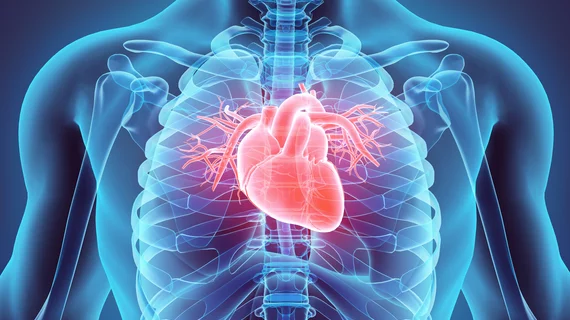What PET imaging can tell cardiologists about post-heart transplant survival
New research published in the Journal of Nuclear Medicine suggests positron emission tomography (PET) myocardial perfusion imaging can be used to quantify myocardial blood flow (MBF) and myocardial flow reserve (MFR), which have been proven as accurate indicators of adverse outcomes after heart transplants.
Organ transplant is the end goal for patients with end-stage heart failure, Robert J.H. Miller, MD, of the University of Calgary, and colleagues wrote in the journal. It can afford HF patients 13 years of life or more, but those patients are also at an increased risk of other CV problems, including cardiac allograft vasculopathy (CAV). CAV accounts for more than one-third of deaths in patients who survive at least five years after their heart transplant.
“MBF and MFR have been shown to be useful for diagnosis and prognosis of CAV in a few single-center studies, however, there is no consensus on which marker—stress MBF or MFR—should be applied for these purposes,” Miller said in a release. “In this study, we compared the utility of MBF and MFR, using previously derived thresholds, to provide the external validation required to guide broader clinical implementation.”
Miller and his team studied 99 cardiac transplant patients who underwent 82Rb PET myocardial perfusion imaging over a five-year period. Twenty-six patients died and 73 survived during the half-decade span, and Miller et al. compared imaging parameters between those patients.
They found that stress MBF, uncorrected MFR and corrected MFR were equivalent in flagging patients with significant CAV. Uncorrected MFR seemed to offer “superior discrimination” for mortality from all causes compared to stress MBF.
Miller and colleagues said that reserved MFR, defined as greater than or equal to 2.0, identified low-risk patients in the study while the presence of multiple abnormal parameters identified patients at the highest risk.
“PET with routine measures of MBF and MFR has a clear role in patients following cardiac transplantation,” Miller said. “This study provides practical information for centers implementing PET for CAV surveillance and will help guide them in implementing these important measurements.”

